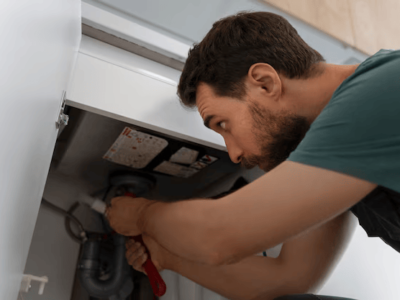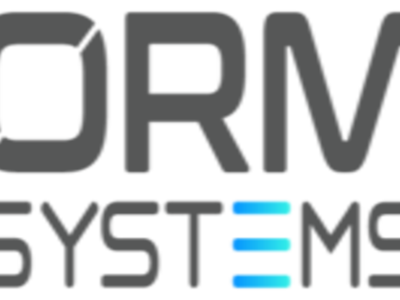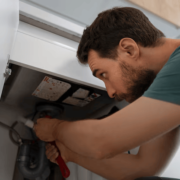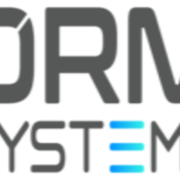
In today’s tech-driven world, smart home solutions have revolutionized the way we live, offering unmatched convenience, security, and energy efficiency. From controlling lights and thermostats to monitoring security cameras remotely, the concept of a “smart home” has become a reality for millions of homeowners worldwide. Smart home automation allows you to integrate and control various devices through a single, centralized system, making everyday tasks easier and providing a seamless living experience.
As technology continues to advance, the demand for smart home solutions has significantly grown in India. Whether you’re a tech enthusiast looking to enhance your home’s capabilities or a homeowner seeking to boost security and energy efficiency, this complete guide to smart home solutions will help you understand the key components, benefits, and how to choose the best smart home system.
What Are Smart Home Solutions?
Smart home solutions refer to the integration of devices and appliances that can be remotely controlled, monitored, and automated using a smartphone, tablet, or voice command. These devices are connected through a central hub, typically powered by the Internet of Things (IoT), which allows them to communicate with one another. Smart home solutions can include:
- Smart lighting systems
- Automated thermostats
- Home security systems with cameras and sensors
- Smart locks and doorbells
- Voice-activated assistants (like Amazon Alexa or Google Assistant)
- Smart appliances such as refrigerators, washing machines, and ovens
The goal of smart home automation is to provide enhanced comfort, security, and energy savings by allowing homeowners to control and monitor their home environment with ease.
Key Components of a Smart Home System
When considering a smart home system, it’s essential to understand the various components that come together to create a connected, automated home. Here are the most common elements of smart home automation:
1. Smart Lighting
Smart lighting is one of the easiest and most popular ways to start automating your home. With smart bulbs, dimmers, and switches, you can control the brightness, color, and timing of your lights remotely. You can schedule lights to turn on or off at specific times or use motion sensors to activate lights when someone enters a room.
2. Smart Thermostats
Smart thermostats allow you to control your home’s temperature remotely, ensuring comfort while optimizing energy use. These devices can learn your heating and cooling preferences and adjust settings based on occupancy, reducing energy consumption when no one is home. Some models even offer integration with weather forecasts to maintain optimal indoor conditions.
3. Home Security Systems
Smart home security solutions provide a range of options, including cameras, motion sensors, door/window sensors, and smart locks. These systems can send alerts directly to your phone when unusual activity is detected, offering real-time monitoring and remote control over your home’s security.
- Smart Cameras: Indoor and outdoor cameras with live streaming capabilities allow you to monitor your property from anywhere. Some cameras also have built-in microphones and speakers, enabling two-way communication.
- Smart Locks: These allow you to lock and unlock doors remotely, grant temporary access to visitors, or set schedules for automatic locking.
4. Voice-Activated Assistants
Voice assistants like Amazon Alexa, Google Assistant, or Apple’s Siri act as the central control hub for your smart home devices. They enable the hands-free operation of smart devices, making it easier to manage lighting, security systems, and appliances with simple voice commands.
5. Smart Appliances
Smart appliances include refrigerators, washing machines, ovens, and vacuum cleaners that can be controlled remotely through your smartphone or integrated into the broader smart home system. For instance, you can monitor your fridge’s contents, schedule a wash cycle, or preheat your oven before you arrive home.
6. Smart Entertainment Systems
Entertainment systems can also be integrated into smart home automation. Devices like smart TVs, sound systems, and streaming devices allow you to control your home entertainment from anywhere. With voice assistants, you can even use voice commands to play your favorite shows or music.
Benefits of Smart Home Solutions
There are several benefits to implementing smart home automation in your home, ranging from convenience to security and energy savings.
1. Enhanced Convenience
Smart home solutions simplify your life by automating routine tasks and allowing remote control of appliances and devices. Whether you’re adjusting the thermostat on a hot day or turning off the lights while on vacation, automation provides an unmatched level of convenience.
2. Improved Energy Efficiency
Many smart home devices, such as thermostats and lighting systems, are designed to optimize energy use. You can schedule devices to operate only when necessary, reducing wasted energy and lowering your utility bills. For instance, smart thermostats can reduce energy consumption by automatically adjusting the temperature when you’re not home.
3. Increased Security
Home automation significantly enhances security by allowing real-time monitoring and control over your security systems. With smart cameras, locks, and sensors, you can monitor your home from anywhere, receive instant alerts, and even lock or unlock doors remotely. In addition, many smart security systems offer cloud storage for recorded footage, making it easier to review and share if needed.
4. Remote Access and Control
Smart home solutions provide full control over your home environment, even when you’re away. Whether you’re checking on your pet via a smart camera or adjusting the thermostat before you arrive, remote access makes it easy to manage your home at any time.
5. Customization and Scalability
Smart home solutions are highly customizable and can grow with your needs. You can start with basic automation like smart lighting and gradually expand to include security systems, appliances, and entertainment systems. As your requirements evolve, you can add more devices and integrate them seamlessly into your existing system.
How to Choose the Right Smart Home Solution
Selecting the best smart home solution depends on several factors, including your specific needs, budget, and the level of automation you desire. Here are some key considerations to help you choose the right smart home system:
1. Compatibility with Existing Devices
Before investing in a smart home system, check the compatibility of the devices with your existing setup. Ensure that the system you choose works seamlessly with your current appliances, lighting, and security devices. Many smart home solutions offer cross-platform compatibility, allowing you to integrate devices from different manufacturers.
2. Ease of Installation and Use
Look for systems that are easy to install and operate, especially if you’re new to smart home technology. Some devices require professional installation, while others are designed for DIY setup. Choose a system that offers a user-friendly interface and provides easy access to all features via a mobile app or voice assistant.
3. Budget
Smart home solutions come in a wide range of prices, so it’s essential to determine your budget before making a purchase. While some devices are relatively affordable, more advanced systems with additional features, such as smart security and energy management systems, may come at a higher cost.
4. Security and Privacy
When selecting smart home devices, consider the security features they offer. Devices that connect to the internet may be vulnerable to hacking, so it’s crucial to choose systems that provide encryption and secure data transmission. Additionally, look for devices that regularly update their firmware to address potential security threats.
5. Future Expansion
Finally, consider how scalable the system is. As your smart home needs grow, you’ll want the ability to add more devices and integrate them seamlessly. Opt for systems that are compatible with a wide range of smart devices and offer the flexibility to expand as your preferences evolve.
Conclusion
Smart home solutions have become an essential part of modern living, offering convenience, security, and energy efficiency. By understanding the key components and benefits of smart home automation, you can make informed decisions about the devices and systems that will best suit your needs. Whether you’re looking to improve your home’s energy management, boost security, or simply add a touch of convenience, smart home solutions can transform your living space into a connected and efficient environment.
For high-quality smart home solutions that ensure seamless integration and top-notch performance, Lauritz Knudsen Electrical & Automation offers a range of products that cater to the modern homeowner’s needs. With their innovative solutions, you can enjoy a smarter, more efficient, and secure home environment.











